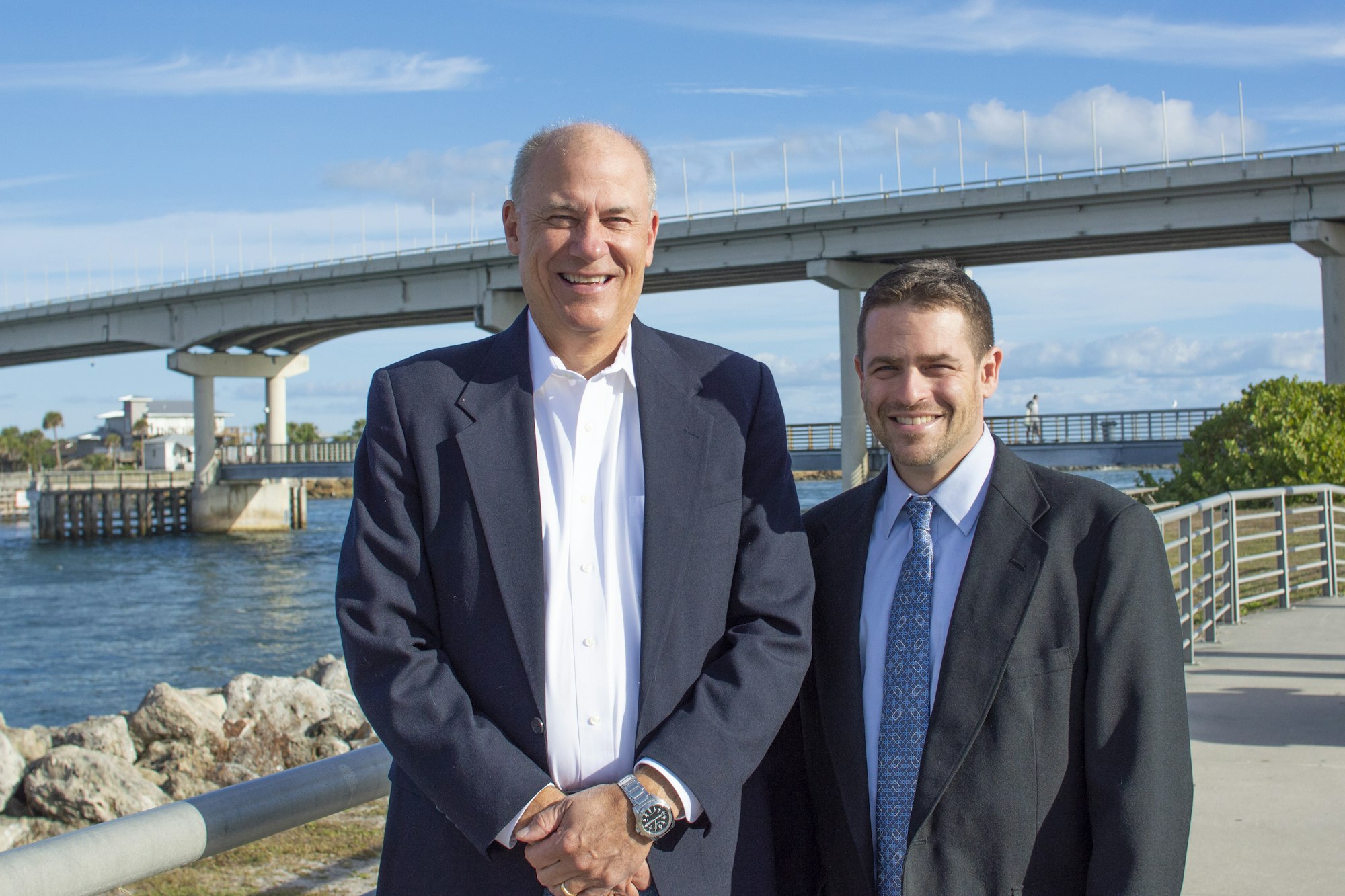New Administrator Named for Sebastian Inlet District

After a competitive selection process, the Sebastian Inlet District Commission has named James Gray, Jr., former natural resources manager for Indian River County, as the successor to Martin Smithson who has served as the District’s Administrator for the past 14 years. Gray will report directly to the five-member elected Commission.
“It’s been my privilege to serve in this role and I couldn’t be more pleased to see such a capable person with the right skills sets and training step in to help manage the District,” said Martin Smithson, Sebastian Inlet District Administrator. “James Gray has been a local coastal expert for more than a decade and I’m confident he will serve the Commission, the District and the community well.”
Gray has started in January and officially assumed the title of Executive Director. He will work with Smithson during a several month transitional process before taking over as Administrator.
Gray is a graduate of Florida Institute of Technology’s Coastal Engineering program, and holds a Master of Science in Engineering Management and a Bachelor of Science in Ocean Engineering. He has served as Indian River County’s Natural Resources Manager and Coastal Engineer since 2004. Gray managed and implemented Indian River County’s Beach Preservation Plan, the artificial reef and lagoon restoration programs, maintained navigational aids, and secured and managed Federal and State grants in excess of $50 million. On the Board of Directors for the Florida Shore and Beach Preservation Association (FSBPA), Gray was recently honored with the 2018 FSBPA Local Government Award for his outstanding leadership and active involvement in the preservation of Indian River County’s beaches.
“Indian River County and the Sebastian Inlet District have worked together collaboratively for many years so I’m very familiar with District operations,” said Gray. “Marty and the Commissioners have completed a number of important and noteworthy projects in the last 15 years, and I hope to build on that legacy.”
Current Administrator Martin Smithson was hired in 2004 as the second administrator in the District’s almost 100-year history. Smithson, completed graduate studies at East Tennessee State University where he holds a Bachelor of Science degree in biological sciences.
He has spent the last 30 years of his career working on Indian River Lagoon related issues for St. John’s Water Management District, Brevard and Indian River counties and as a private consultant. During his time with the St. John’s Water Management District, he conceived the Indian River Lagoon specialty license plate that raised more than $4 million during its first seven years and now generates about $400,000 per year to provide a sustainable source of continued funding for environmental programs impacting the lagoon. He was also directly responsible for the construction of Brevard County’s first baffle box stormwater treatment system and water clean-up projects in Indian River County’s main drainage network with more than 300 miles of canal systems.
Several major projects were completed during Smithson’s tenure. After decades of attempts, the Sebastian Inlet District in 2007 was able to complete a 3,120 ft. channel extension connecting the ocean inlet to the Intracoastal Waterway. The 9-foot deep, 15-foot wide channel was completed with navigation markers installed in 2008. The impact was both economic and environmental. The local marine industry benefitted from the new channel that could now accommodate larger vessels. Channel markers and seagrass area caution signs installed by the District to delineate 145 acres of flood tidal shoal seagrass habitat helped protect seagrass beds in the lagoon. This work was recognized with awards from the Barrier Island Coalition, Pelican Island Audubon, Friends of the St. Sebastian River and Citizens for Florida Waterways.
That same year, the District began its partnership with Florida Institute of Technology and renowned coastal modeling expert Dr. Gary Zarillo to analyze coastal systems data and conduct modeling work focused on managing sand resources in the Sebastian Inlet area.
In partnership with Sebastian Inlet State Park, the District in 2011 constructed a 6-acre Dredged Material Management Area (DMMA) that would allow the District to stockpile 30,000 cubic yards of sand for emergency dune and beach repair, work central to its charter.
Another notable milestone during Smithson’s time as Administrator: from 2004-2014 the millage rate levied by the District was lowered by 68% and the District secured more than $8M in cost share funding from outside sources.
In 2013, an outside, independent economic study commissioned found that Sebastian Inlet generated $93M in business revenues per year for regional businesses and $8M per year in state and local tax and fee revenues. Combined with the increased property values due to the inlet, total projected annual impact was quantified at $200M.
In addition to scientific management of the inlet system, Smithson also oversaw the expansion of the inlet’s Sand Trap, periodic dredging and beach restoration projects, and extensive environmental monitoring of the critically important habitats around the inlet; nearshore hardbottom reef to the South and seagrass beds on the Western flood shoal in the Indian River Lagoon.
The Sebastian Inlet District was created in 1919 as an independent special district by act of the Florida State Legislature, and chartered to maintain the navigational channel between the Atlantic Ocean and the Indian River. The Sebastian Inlet District is governed by a 5-member, elected Commission and its responsibilities include beach re-nourishment and dune repair as part of a state mandated sand bypass system, erosion control, environmental protection and public safety. The Sebastian Inlet supports a rich and diverse ecological environment that is unparalleled in North America. The Inlet is vital not only to the ecological health of the Indian River Lagoon, but it is also an important economic engine for local communities in the region. Known as the premier surfing, fishing, boating and recreational area on the east coast of Florida, the inlet is one of only five navigable channels that connect the Indian River lagoon to the Atlantic Ocean.
